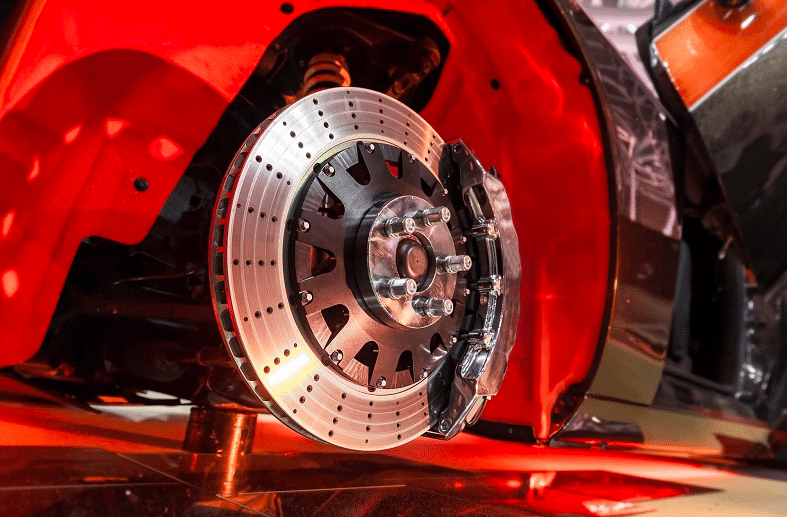It is said “if your engine doesn’t work: there you are. But if your brakes don’t work: well, there you go.” Your car’s brakes are one of the most important things to check and keep working properly. A serious accident is almost inevitable when your car’s brakes fail. Obviously, this will affect your health, your finances, and the cost of your auto insurance after the accident. Forget about get now and pay later auto insurance plans as no insurance company will want to take any risks with you.
Of all the mechanical maintenance items you can perform yourself, this is one that will net you the most savings. However, the potential cost of a mistake here can be catastrophically high, so you need to take an honest look at your mechanical skills and confidence level and decide whether or not you trust your life to them. If you do, then break out the wrenches. If not, then it is time to call discretion the better part of valor and hire a pro.

What you need to consider when doing brake jobs
Though most vehicles on the road today follow a typical pattern, there are a hundred little differences from vehicle to vehicle and lots of intermediate steps to get you from one part to the next. And while servicing disc brakes is relatively simple, drum brakes are a whole different kettle of fish, as you are soon to see.
You should focus on the disc brake pad replacement, for a couple of reasons:
- Many vehicles use disc systems on the front and drums on the rear, and front brakes will wear out two to three times faster than rears because they do most of the work during braking.
- The older drum brake system is far more complex and difficult to service properly, and it is something you will most likely choose to leave to a pro.
Brake System Basics
Your brake system is, in its most basic sense, a means to take movement from your foot, split it up into four directions, and transfer it to a set of brake pads. The brake pedal hangs from a pivot. When you press down on the brake pedal lever, it pushes on a rod that runs to the master cylinder. But on the way to the master cylinder, this push rod passes through a device known as the vacuum brake booster.
The left half of the booster is open to the atmosphere; the right half is sealed and connected to your engine’s intake manifold with a hose. In between these two chambers is a flexible diaphragm attached to the brake rod. Vacuum from the engine-side of the booster pulls on this diaphragm, and thus the rod, adding a bit of extra oomph to the rod so you are not breaking your leg to apply the brakes.
This vacuum-powered rod pushes on a piston inside the master cylinder, which in turn pushes fluid through the system’s hydraulic lines. The hydraulic lines connect to the slave cylinders in drum brakes or the caliper pistons in disc brakes, which then push the brake pads or shoes against the rotors or drums. Keeping your car in a great condition allow you to get discount on auto insurance.
Rotors: Machine vs. Replace
Your rotors will, at some point develop grooves so deep that you need to machine them flat again. The question is: should you? Rotor machining involves bolting the rotor to a lathe – which simulates your spinning wheel hub – and running a cutting blade over its surface until it is completely smooth. While machining will leave a smooth surface, the problem is that every time you machine the rotor, it gets a little thinner.
All manufacturers specify a minimum rotor thickness, a measurement you will need to check with a very precise brake micrometer. But these days, a new rotor for most cars will typically only run you about $25 – which is perhaps $5 to $10 more than the cost of machining. And then you must factor in ancillary costs, like the brake micrometer (about $40, but handy to have around), gas to and from the machine shop, downtime while the rotors are getting machined, and time spent making phone calls, driving around, and sitting at the machine shop. So, in this case, the logical thing is usually to add a couple of rotors to your parts collection and pop for new ones on your car.
Replace One vs. Replace Both
Assuming that you don’t have any major brake system malfunctions, your left and right brakes should wear at the same rate. If one is worn out, the other will wear out right after the one you just replaced. This is like replacing one shoe at a time or changing socks on an as-needed basis.
So, you could wind up doing a brake job on one side of the car every third oil change. And more importantly, replacing the rotor or pads on only one side causes a power imbalance in the brake system, which does little good for safety or pad wear. So, always replace the left and right pads, shoes, rotors, or drums on a given axle at the same time.
You can, however, replace the front and rear brakes separately. Front disc brake rotors will generally last through two pad replacements, or between 60,000 and 100,000 miles. Rear drums or discs will usually last much longer. In fact, it is entirely possible that you will never have to replace them, at least not before you get rid of the car or the warranty expires.
Get to know your vehicle’s brake system and be sure to perform proper brake maintenance. Remember, it is better to pay maintenance now to keep your car running well and benefit from car insurance first month free plans.
Facebook Comments